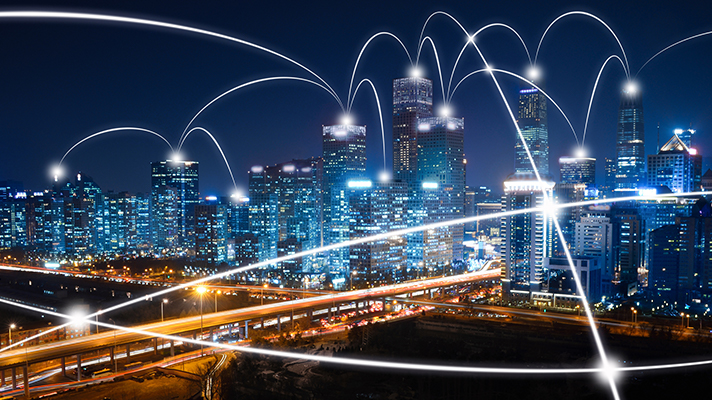
The impact of 5G wireless networks cannot be overstated. An ultra-fast wireless technology — up to 100 times faster than current cellular connections, faster than even physical fiber optic cable — 5G represents a major change, especially for data-intensive applications such as digital imaging.
“Take the movement of medical images, which are very large,” said Todd Donzelli, SaaS transformation leader at GE Healthcare. Previously, given the lag time, remote access to these files wasn’t convenient. “So, 5G brings the possibility of accessing medical images and records off-site, virtually in real time.”
Such scenarios will be a boon to telemedicine, Donzelli added. “I can be 200 miles away from a Level 1 hospital, but if I have a convenient care in my small town, the local person, probably a physician assistant, can hook me up with a medical specialist.”
Telecom analysts confirm the importance. “The point is, [5G] will enable business processes that weren’t possible or were impractical to scale,” said Gabriel Brown, a principal analyst at Heavy Reading, the research division of Light Reading, which offers deep analysis of emerging telecommunication trends. He said 5G could be more dynamic than the arrival of mobile data and associated handsets, 10 to 15 years ago.
“All four major U.S. carriers will provide 5G services between late 2018 and mid-2019,” according to AT&T, “and nearly half of the mobile subscriptions in North America will be 5G by 2023.” Other estimates predict that by the end of 2024, there will be 1.5 billion 5G mobile subscriptions, covering 40 percent of the world and handling 25 percent of all mobile traffic data[1].
Maybe, but Brown asserted that despite weekly 5G announcements by the likes of Verizon, Sprint, and AT&T, “some of this stuff will play out over the next 10 years.” He added it remains to be seen whether bumps in the road will crop up along the path to widescale 5G deployment. Nevertheless, Brown stressed the time is now for chief information officers to consider how 5G will affect their respective industries, either in terms of efficiencies for existing systems or as a platform for brand new products and experiences.
“CIOs absolutely should be looking at how 5G capability can help them redesign and optimize business processes,” Brown said.
Along with mobile broadband speed (one gigabyte per second), 5G is also ultra-reliable and has low latency. (Latency is the delay that takes place during communication over a network. Current cellular networks have around 20 milliseconds of latency. While that doesn't seem like much, with 5G, this is reduced to as little as 1 millisecond. That responsiveness will be critical for things like a surgeon controlling a pair of robotic arms and performing a procedure, remotely, in a distant city.) This makes it suitable for various healthcare applications for which near real time is essential, such as telemedicine and even remote-controlled surgery. At the 2019 Mobile World Congress in Barcelona in February, the chief of a hospital clinic gastrointestinal surgery unit used 5G technology to direct and assist a live surgery via a video link.[2]
While novel applications like remote-controlled operations are further out on the horizon, 5G will immediately improve the well-established practice of remote patient monitoring. So, rather than checking, say, a blood oxygen level every five minutes, 5G infrastructure will support hundreds of measurements, hundreds of times per second.
“From my perspective, absolutely it’s going to be a game-changer,” said Joyce Sensmeier, vice president of informatics, technology, and innovation at HIMSS. “If you can have instant feedback, instant access to experts, or even in a hospital environment, instant access to the evidence, that will inform your care and improve your care.”
In addition, the 5G infrastructure will accelerate telehealth, an already exploding category. Americans' use of telehealth jumped by 53% between 2016 and 2017, outpacing growth in use of urgent care centers, retail clinics, ambulatory surgery centers and emergency rooms, according to a new white paper[3] by the nonprofit FAIR Health.
“I was speaking with a radiologist last week regarding the coming wave of technological advances, and he told me that he believes the advances we will see in the next decade will eclipse anything he has seen in his 30-year career,” said Meaghan Kerins, Global Leader, Marketing Communications at GE Healthcare.
The confluence of 5G, AI, and other yet-to-be-developed healthcare applications suggests tantalizing possibilities. As Donzelli tweeted recently: “Could #AI, #FacialRecognition, #5G, and #MachineLearning mean that someday soon you could receive primary medical care through your mobile device?”
[1] 5G estimated to reach 1.5 billion subscriptions in 2024, Ericsson Mobility Report, November 27, 2018, https://www.ericsson.com/en/press-releases/2018/11/5g-estimated-to-reach-1.5-billion-subscriptions-in-2024--ericsson-mobility-report
[2] With the Help of 5G Technology, Doctor Directed The First Remote Surgery in A Packed Auditorium, Top News Gazette, February 7, 2019, https://topnewsgazette.com/healthcare/with-the-help-of-5g-technology-doctor-directed-the-first-remote-surgery-in-a-packed-auditorium/.
[3] Growth in telehealth use outpaces urgent care centers, retail clinics, Healthcare Dive, April 2, 2019, https://www.healthcaredive.com/news/growth-in-telehealth-use-outpaces-urgent-care-centers-retail-clinics/551799/



